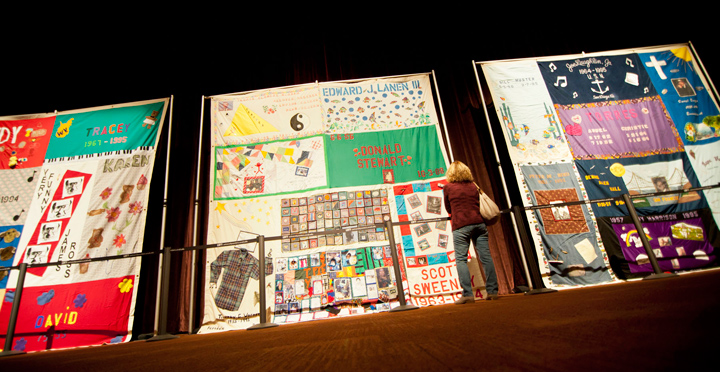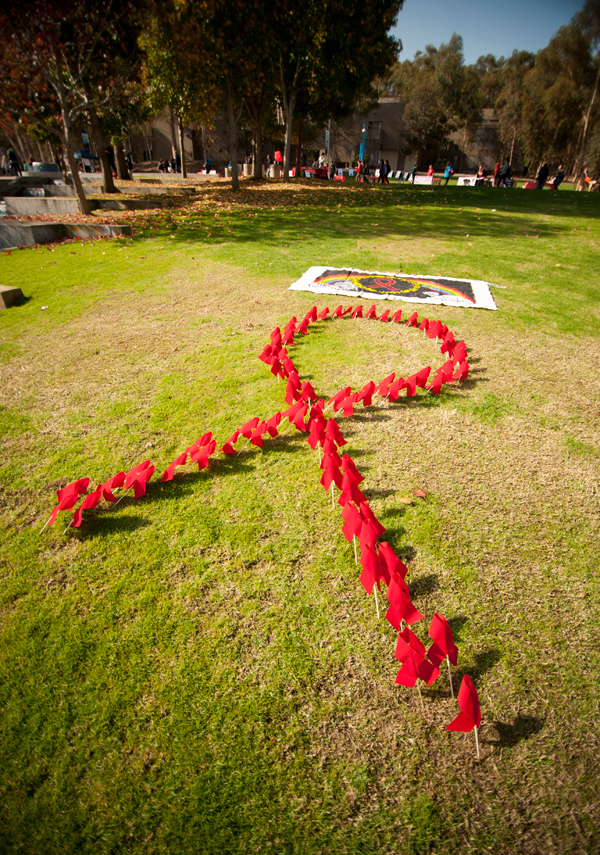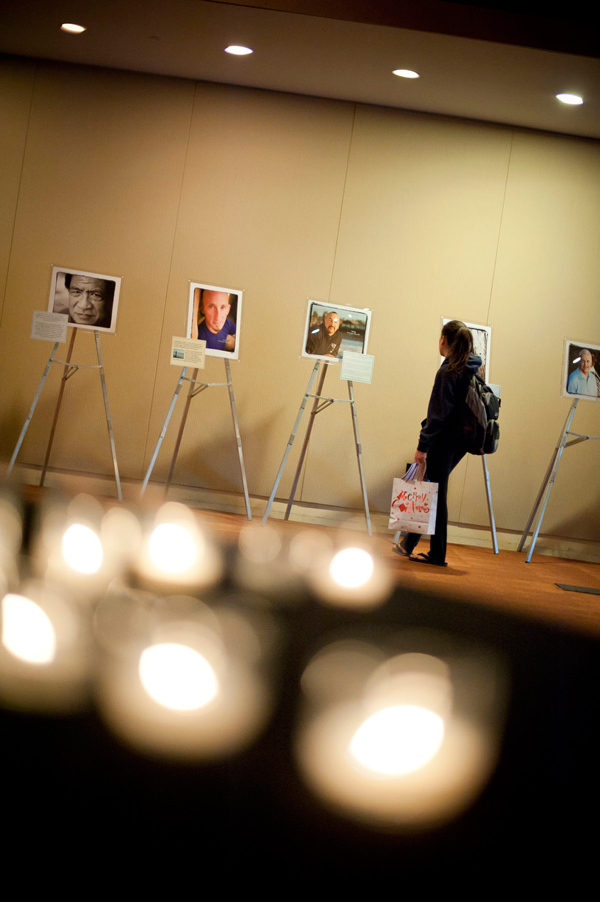
By:
- Christine Clark
Published Date
By:
- Christine Clark
Share This:
Campus Marks World AIDS Day with Candlelight Vigil, Viewing of Memorial Quilt, Educations Lectures

Photos by Erik Jepsen/UC San Diego Publications
At age 20, Christie Milton-Toress was diagnosed with HIV and her husband, Angel, was diagnosed two months later with AIDS. Fortunately, their only child was born HIV negative. At the time in 1985, very few women were speaking out about their experiences with HIV. However, Toress became a spokesperson who advocated for the needs of families living with HIV/AIDS. Toress is just one individual whose legacy continues to live on through the AIDS Quilt, the largest ongoing arts project in the world.
On Thursday, portions of the AIDS Quilt were on display at UC San Diego, as part of the university’s recognition of World AIDS Day. The portions represented individuals, such as Torress and organizations from San Diego.

In conjunction with the quilt display, UC San Diego sponsored a number of other events that included musical performances, a morning candlelight vigil, educational lectures and performance art.
“Students today have never not known HIV. This is very different than students in the eighties and before,” said Debbie Pino-Saballett, director of Health Education at Student Health Services (SHS). “This event is designed to teach about HIV/AIDS in the U.S. and globally, but also something about the history and the personal side of the epidemic. We want to educate students to reduce the risk of infection and to teach how HIV/AIDS affects everyone.”
The theme for this year’s Worlds AIDS Day recognition at UC San Diego was “Getting to Zero,” which conveyed the need to eliminate discrimination against HIV/AIDS and infection of HIV/AIDS.
“This is the most impactful event I have been to at UC San Diego,” said Muir College junior Mellissa Ha. She said she was intrigued by Jae Hansen’s photography exhibit, “Survivors,” which accompanied the quilt in the Price Center East. The photos feature people in San Diego, including Hansen, who have been long-term survivors of HIV/AIDS.

Senior Delia Felix also found the photos and Quilt display moving. “I know a few friends whose parents either had or have AIDS,” she said. “Reading these people’s stories and seeing the quilt makes realize how close this epidemic hits home, yet how people continue to fight the disease and not give up.”
Other events included a performance from Scott Paulson, UC San Diego’s carillonneur, who played original music especially written for the day. Members of the university community participated in a “die-in,” as the carillon played, to vividly showcase the death of HIV infected individuals throughout the world who don’t have access to medication.
On Library Walk, red ribbons and condom “roses” were distributed throughout the day in addition to prevention information and other educational materials from various organizations.
“Everyone deserves to be well-informed” said Maddison Eshoo, a student heath advocate who handed out information. “Today is World AIDS Day everywhere around the world. It feels good to help spread awareness about HIV/AIDS here at UC San Diego. I think it’s really important.”
Treating and curing AIDS were the theme of many events Thursday. Throughout the day, educational talks took place at the Cross-Cultural Center, including a talk on San Diego’s Lead the Way program, a first-of-its-kind study with the UC San Diego School of Medicine about the attitudes and barriers to HIV testing. Other speakers included Taylor Gilliland who presented “We Have A Drug Problem: Universities, Big Pharma, and Access to AIDS Medicines in the Developing World.” Gilliland is a UC San Diego doctoral candidate in biomedical sciences.
World AIDS Day events at UC San Diego are made possible through collaboration across campus of various students, staff and faculty.
World AIDS Day was established globally December 1, 1988 to raise funds, increase awareness, fight prejudice, and promote education related to HIV/AIDS prevention and treatment.

Share This:
You May Also Like
Stay in the Know
Keep up with all the latest from UC San Diego. Subscribe to the newsletter today.


